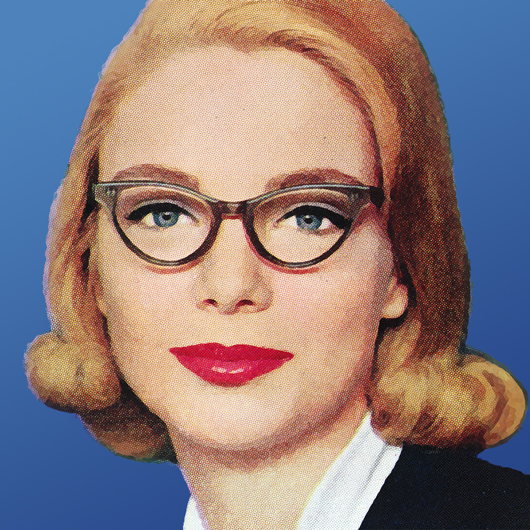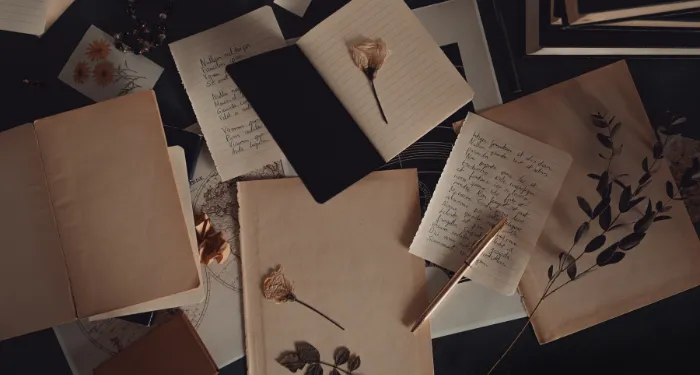In 2023, Daniel Martuscello III, the new Acting Commissioner of New York’s corrections department, started sending the state’s prisoners encouraging letters over the electronic messaging system on our tablets. He wrote about attending prison college graduations, described his reflections on his car ride back to Albany, and told us he wanted to build relationships with “credible messengers” within the prison population. Practically all his family had worked in corrections; he had started as a guard. Some prisoners and activists suspected his notes were part of a charm campaign to get New York’s progressive senate to confirm him as a commissioner. If so, it was effective.
In March 2024, before his confirmation, I wrote Martuscello a letter via my publicist, Megan Posco. For the past few years, I reminded him, I’d been mentoring other emerging writers in Sullivan Correctional Facility, a maximum-security prison in the Catskills. In the cellblock or the yard, we’d talk about the stories that surrounded them, the stories they wanted to write about themselves, and how they could plot those stories on the page. We would go through draft after draft. Then they would send their essays to Megan, who tidied them up and pitched them to editors. (To freelance from prison, you need outside help with logistics: contacting editors, presenting clean work, reformatting extensive edits so that they show up on an electronic tablet, taking down changes over the phone, filling out W-9s. Megan does all of this for me.) In my letter to Martuscello I included their clips and asked, on a lark, for a classroom to teach them as a group.
Weeks later, in April, a correctional officer came to my cell and told me the prison’s superintendent—a former teacher—wanted to see me. It was the first time we’d had a conversation. She was, it turned out, approving the Sullivan Nonfiction Writing Workshop. When she expressed concern about the content the guys would be publishing, I said I couldn’t dictate the stories the group could or couldn’t write—but she told me that she was willing to give it a shot.
I didn’t know how to teach, so I crowdsourced a curriculum. I talked to colleagues like the novelist and tech journalist Vauhini Vara, my mentor in the Lighthouse Writers’ Book Project, who offered ideas and writing exercises. In July it began. We cleared metal detectors; guards fingered through our folders. There were ten of us, including me, all in for murder and all, except me, men of color; collectively we had served more than 250 years in New York prisons.
It’s rare that a prisoner is allowed to lead a workshop on the inside. It’s usually professors from local universities who come in to teach. How would the guys vibe in a group and hear my criticism in front of each other? When we worked one-on-one, they were only receiving criticism from me. We’d find a quiet spot in the yard to go over my feedback and edits. Now I’d give tips and shoot down ideas in a classroom setting, their peers also chiming in. Many of them were former shot-callers themselves—powerful, feared figures who had once led gang factions in prison. But they had shown me their talent and wanted to learn how to get their writing published.
From the start I knew that the workshop had to be rooted in personal essays and first-person reportage. I decided to teach my own pieces, if only as a kind of blueprint; I could tell the guys precisely why I had put myself into the narrative and how the personal material moved the story along. I’d point to parts of an essay that exemplified the journalism jargon I’d been drilling into them: “character drives story,” “nutgraf,” “stakes,” “narrative, in a nutshell, is chronology.” I’d point out the difference between scenes I experienced or witnessed myself and scenes I reconstructed after the fact, reporting them out in conversations with subjects. I told them the sorts of questions they could ask in interviews: When were you first introduced to violence? What did your mom’s boyfriend whip you with? Do you remember what you were wearing?
I told them they needed to level with the reader by acknowledging the crimes that brought them here. I explain in almost all my published essays that at twenty-four years old, with a ninth-grade education, I was locked up for murder and selling drugs. It’s a necessary confession—like an aside between me and the reader. I want to let them know, without saying it outright, that they can trust me to guide them into our world, to dispel myths. Access was our edge, I told them, but part of being a reliable narrator was offering ourselves up for judgment. That meant being honest and vulnerable, which is tough, because to survive prison you have to be guarded.
For a class on op-eds, I assigned Nicholas Kristof’s rules for the genre: “Start out with a very clear idea in your own mind about the point you want to make. Don’t choose a topic, choose an argument. Start with a bang.” We workshopped a piece by a participant named Joey Sanchez arguing in favor of the Second Look Act, a law that would allow judges to revisit a person’s sentence. Another member of the workshop, Robert Lee Williams, made copies of the essay at his job at the clerical law library, and we all gave it a quick scan before Joey shared his work aloud. “At twenty-one, I was a full-time college student,” he read. “I also sold drugs and carried guns.” We all listened in silence and marked up our copies as we read along. When Joey was done, I told the class to take a beat and reflect.
*
Weeks later, news came that Sullivan was one of two maximum-security prisons in New York slated for closure. In the past twenty-five years, about the same time I’ve been locked up, the state’s prison population has halved; New York City’s murder rate has dropped over the past three decades by even more. Many of the guards were disgruntled. They’d bought homes near the prison, bonded with each other over their dangerous jobs, and now, like us, they would be split up.
Prisoners are more accustomed to being uprooted. You’ll be in one prison for years, then one day a guard shows up at your bars, hands you four draft bags, and tells you to pack up all your property. The next day you’re cuffed and shackled and wrapped in chains, hoping that your paperwork and books don’t get lost and that your typewriter doesn’t get smashed. You may never see the men in your prison again.
With my past transfers, I didn’t much care about that. Prison was prison; faces blend, disappear, reappear. But the guys in the workshop had developed a camaraderie, even intimacy. I pushed my earlier luck and asked Martuscello if we could all transfer to the same prison together. He didn’t respond.
We kept showing up every week, as the cheesy inspirational posters disappeared from the walls of our classroom and the books in the general library across the hall got boxed up. On the last Friday in August, I shared good news from Megan. “Big night,” I told the group that evening. “Joey’s op-ed just got accepted at The New York Times.” The men clapped and smiled. I often think about how radically it changed my life when I landed my first piece in The Atlantic more than a decade ago. Writing had helped me build a new identity, and now for these men it was doing the same.
*
My life was a mess for as long as I can remember. I sold drugs, did drugs, killed a man. In 2004, at the beginning of my twenty-eight-years-to-life sentence, after a brief stay at Sing Sing, I was put in Clinton Correctional Facility, a maximum security in Dannemora, near the Canadian border, where I kept doing and selling drugs. Then, in 2008, another prisoner shoved a shank into my left lung six times. He almost killed me. When I recovered, I landed in Attica.
I’d heard about a nonfiction creative writing workshop there taught by Doran Larson, an English professor at Hamilton College, but I couldn’t get in. Opportunities in prison are scarce, and prisoners in such programs often act like gatekeepers, especially if they think that someone’s personality would overwhelm the group. For years most of the people in the Attica writing workshop were guys in honor block. But the best-behaved, mildest-mannered people aren’t always the most promising writers.
There was no college in prison back then, but I was lucky: my mom paid for correspondence courses from Ohio University. When I went to Attica’s school building to take my proctored exams I’d talk to a member of the writing workshop who worked as a clerk there. I told him I was reading Virginia Woolf for a “women in literature” class. After a few of these literary conversations, he asked if I wanted to join.
It met monthly, sometimes more often. The group had a couple Hispanic members, Jason and José, but it was mostly white guys—Dean, Bob, and Abdullah, a white biker who had converted to Islam, and probably the best writer of the bunch. I was the worst. Most were already publishing essays in literary journals. We usually started with a check-in: we would commiserate a bit about Attica. Doran told us that when he walked the corridors wearing a fedora the guards would sometimes hum the theme of Indiana Jones. One of us would share a rejection or grumble about an editor’s silence. Another would chime in about the guards beating up a prisoner or the package room denying a book. A directive prohibited us from receiving books ordered by people on the outside (we had to order them ourselves, from our commissary accounts); when friends and loved ones tried anyway, we would get called down to fill out paperwork so the guards could mail the books back home at our expense. Even Doran had to get approval to bring in Best American Essay anthologies. Because periodicals came with the regular mail that was delivered to our cells, my mother subscribed me to a bunch of magazines: Esquire, The Atlantic, The New Yorker, this one. When I think about it today, that stupid directive—which got me reading nothing but longform features and reverse-engineering their structure—helped me become a journalist.
Doran modeled the course after the writing workshops he’d been running in college and university settings for years. Someone would read their in-progress essay aloud, then we would make comments as the writer sat in silence. Criticism is tough for the novice, because many of us fall in love with our early writing. In one of my first essays I compared myself to a lotus flower blossoming in a river of rough rapids. My mother loved the line and told me I was a wonderful writer. I was not. When Doran put brackets around the sentence and wrote in the margin that it seemed “a bit self-aggrandizing,” I told myself he was jealous. When the agonizing realization sets in that our early work was awful, it’s a sign that we’re finding our voice.
I couldn’t relate to all the readings: Montaigne felt antiquated and abstract. But several did leave an impression on me. I admired Jose Antonio Vargas’s essay “My Life as an Undocumented Immigrant”—about coming to America as a child, becoming a journalist who sought truth even as he lived with a secret, and struggling with the constant fear of being found out—for its embrace of complication and sense of revelation. I felt like Phillip Lopate was writing to me when, in the introduction of The Art of the Personal Essay, he described the personal essayist as a Houdini figure:
I am more than the perpetrator of that shameful act. I am the knower and commentator as well…. If some readers are repelled by a writer’s behavioral contradictions, this is quite all right, because the personal essayist is not necessarily out to win the audience’s unqualified love but to present the complex portrait of a human being.
On one subject I often felt righteously indignant. Every time we workshopped a slice-of-life essay about Attica’s awfulness, I couldn’t resist commenting that the writer had left out his crime. Looking back, it was maybe unkind of me to keep calling this out. I still adhered to the prison pecking order, a warped thinking that allowed me to feel superior to the other men because my crime had emerged from a drug-dealing lifestyle, whereas they had killed wives and girlfriends. People in society, on the other hand, likely weren’t parsing whose murders were more respectable.
*
By 2018 I was back in Sing Sing and regularly writing features for magazines. I reported in the yard, wrote in my cell. My bed was up against the bars, so I sat on the edge of my bunk, back against the wall, typewriter on my lap. I often reread the gems of writing advice that I’d scribbled onto pieces of paper and taped to the cell wall. I studied Vivian Gornick’s 2001 handbook The Situation and the Story, in which she explained that “the situation is the context or circumstances, sometimes the plot,” whereas “the story is the emotional experience that preoccupies the writer: the insight, the wisdom, the thing one has come to say.” I took cues from an article Graydon Carter had recently written for Vanity Fair in which he suggested that the most important elements of magazine stories are access, narrative, disclosure, and conflict.
Sometimes my own reporting caused conflict. Not everyone wanted to be a subject. Certain men, approached for interviews, explained that they were writers themselves and wanted to craft their own narratives. Some asked me to take a look at what they were working on, usually a screenplay, a memoir, or a “hood novel.” When they asked for advice, I told them I started out publishing essays. By writing fiction, I argued, they were squandering their access to all the colorful characters in here—our competitive advantage. In 2019, in the first piece I wrote for this magazine, I voiced my desire to teach a workshop. But when I reached out to the superintendent urging him to let me be more useful as a mentor to other prisoners, he didn’t take me up on it.
In 2020, after my Sports Illustrated story about gambling created a security issue, I was transferred out of Sing Sing and landed in Sullivan. Built in the early Eighties, it consisted of two-tiered sixty-man cellblocks that wrapped around a common area where prisoners played dominoes at tables bolted to the floor, or watched the TV that hung from an orange banister. Sing Sing cellblocks hadn’t had a common area. At Sullivan, this was where I started mentoring other prisoners who wanted to write.
LaMarr Knox had a big frame, big hands, and a big rep as a former head Crip. When we met in the common area to come up with a story idea together, he told me about his daily routine over the noise of Steve Harvey hosting Family Feud. He confessed an unusual hobby: crochet. “That’s the story!” I told him.
He agreed to give it a try. We went through ten drafts together, nailing down the details and working out the chronology. He typed each round on his own Swintec typewriter with a seven-thousand-character memory. Then we got it to Megan. Weeks later I was off to the side in the common area watching LaMarr, at the kiosk, showing around the illustration that The Marshall Project had commissioned for his essay. Everyone laughed and teased and congratulated him. Later he told me that, aside from parenting his son from prison and keeping him out of trouble, getting published was the most significant accomplishment of his life.
Other writers soon followed. In “Uprooting the Lie,” Dyego Foddrell wrote about bettering his life in prison, missing his mother who died years before, and forever carrying the shame of lying to her—and himself—about killing his girlfriend’s child. After Joey Sanchez published “Better Call Joey,” a piece about helping other prisoners as a jailhouse lawyer, he realized that he could bring about change by writing essays as well as legal motions. Robert Lee Williams, an ambitious spoken-word poet and rapper who walked with a bop that made his long dreadlocks bounce, published in Plough, Literary Hub, and Slate; he lived in a different cellblock, so we met in the yard and spun the perimeter talking shop, pausing occasionally so that he could rest a notebook on his knee to jot something down.
In 2024, once the workshop got underway, I did the same thing I had done with the guys one-on-one. This time we went around the classroom and each writer shared his ideas while others listened and chimed in. We did ten-minute free writes with prompts like “the saddest scene I’d ever seen in prison” or “the most tender scene I’ve experienced in the yard.” In time each of them arrived at the right story.
I wanted them to read other prison journalists. We studied essays by Dannie M. Martin, who in the 1980s was regularly publishing first-person reported pieces of prison life in the San Francisco Chronicle, later collected in his book Committing Journalism (1993). He wrote about blind prisoners, gay prisoners dying of AIDS, a squirrel he befriended. We needed to see our situation as an opportunity instead of a liability, at least when it came to nonfiction writing. I shared what Martin told the Los Angeles Times about his own access: “I had read so many dull things and I kept saying to myself: ‘With all the interesting material I’m around every day, I should be able to write better than that.’”
*
It lasted three months. By the end of September my efforts to keep the group together had failed: we transferred to different prisons. (Keeping our workshop together, despite all our success, surely wasn’t at the top of the commissioner’s mind as he took heat from hundreds of displaced guards.) Joey Sanchez, James Sheffield, and I landed together in Sing Sing—my third time there, in the same cellblock I had left years before. I was leery of returning. Joey had my back, but I didn’t want my problems to be his.
Known as New York’s flagship prison for rehabilitation, Sing Sing, in practice, was wilder than I remembered. One day, during my first week back, I was walking down a long and narrow tier, a bag of shower gear slung over my shoulder, when suddenly the kid in front of me sliced the face of the kid in front of him. The sliced kid froze and held his face; I kept walking behind the cutter. It’s how the gangs settle beefs. They refer to the target as a plate of food they have to cut up and eat. I soaped up and rinsed off in the crowded outdoor shower.
On my way to chow the next morning, a shirtless man, seemingly psychotic and probably high on something, shouldered through the crowd toward the guard at the end of the tier and pulled something out of his mouth. The guards pummeled him. The rest of us tiptoed around the puddles of blood, cleared the metal detector to the mess hall, and waited in line for cornmeal and toast.
To my surprise, a number of men at Sing Sing had heard about the workshop and Joey’s piece in the Times. Several asked to get down with the workshop if I got it back up and running. This time I did not reach out to Martuscello: I had gotten the feeling that the Sullivan superintendent didn’t like it when I went over her head. I wrote the new Sing Sing superintendent in October 2024 (the one who had denied my previous request had retired), but was told by her deputy that “we cannot offer this program because we don’t have the space in our school building.”
To be fair, New York’s corrections department was on the brink of chaos. A few months later, in February, guards across the state walked off the job in an illegal strike. The National Guard was called in; all programs were frozen. I’m back to mentoring in the concrete yard. Megan has also been keeping tabs on some of the other workshop guys who wound up in different prisons. She placed three pieces in The Appeal—Dyego on the juvie-to-prison pipeline, LaMarr on being an incarcerated father, and James on the trauma of transferring to a more chaotic prison as a man in his late sixties. It was his first publication.
I often think about the time before I came to prison, when I had no promising future. I’ve come to realize that two opposing realities can be true at once: prison probably saved my life and it’s where I learned to write; and prison is a disgusting place that’s hurting me more now than ever. I’m both ashamed and proud of my path. But it wouldn’t have been possible if prison officials hadn’t given writing programs a chance. What if the Attica superintendent had dismissed Doran Larson’s request to teach his workshop? I might never have become a writer. Seven of the nine men in my Sullivan workshop are now published essayists. I wonder what the budding writers of Sing Sing could have done if the superintendent had simply said yes.



















 English (US) ·
English (US) ·